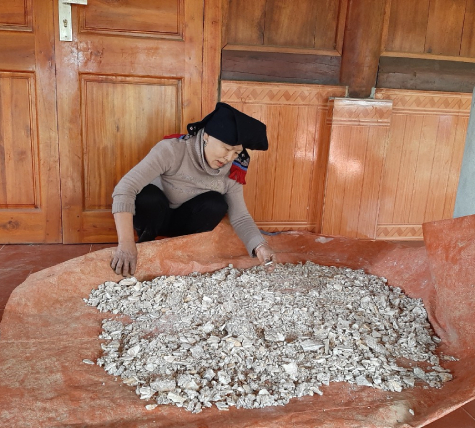Your basket is currently empty!

Benzoin Siam is the best material for Fragrances
Benzoin is an excellent fixative that has the power to embrace the fragrance of many aromatic oils and perfumery ingredients, Benzoin is a common element in the perfume and incense-making industry.
Incense use
In volume terms, the greatest use of benzoin – the Sumatra type – is for incense purposes. Most commonly, small or crushed pieces of the raw benzoin in block form are simply placed on an open fire, either in the house or in the place of worship. It is used by several of the major religions, including Moslems and Hindus, and in Chinese temples, and accounts for the fact that the Middle East, North Africa, parts of Asia and the Indian sub-continent are important export destinations for Sumatra benzoin. It is also used in the Catholic and Orthodox churches and is often formulated with other natural fragrance materials such as frankincense, myrrh and storax (derived from S. officinale, the sole Mediterranean species of the genus).
The use of benzoin for incense purposes by the large Muslim population in Indonesia is impossible to estimate but could be great. It is said to be especially used in Central Java for ceremonies requiring incense.
One other popular retail outlet for benzoin in Indonesia which involves burning it in the home employs modern packaging and marketing. Ratus Dedes®, a small sphere about the size of a golf ball, consists of a mixture of crushed fragrant herbs and tree barks, as well as benzoin. The user sprinkles pieces of it on an open fire to create a fragrance, either to fill the whole room or over which a woman hangs her hair (marketing is aimed at young women).
Extracts of Sumatra benzoin are used to produce fragrances for joss sticks. Sometimes the fragrance formulation is traded internationally and sometimes the joss sticks themselves are exported. India uses fragrances containing benzoin and other natural oils and resins in the manufacture of agar batti. Although most imports of benzoin into Malaysia are of block benzoin for direct use as a source of incense, one fragrance compounder purchases benzoin extract for the production of joss stick perfumes. A little benzoin extract goes a long way, however, and in the case of Malaysia, less than 100 kg of extract are purchased per year.
Formulated fragrances (other than for incense)
The better grades of benzoin are extracted and used in the manufacture of fragrances which are then compounded and employed in a wide range of end-products. These include personal health care products such as toilet soap, shampoo, body lotion and cream, bath oil, aerosol and talcum powder, and household and other products such as liquid soap, air freshener, fabric softener, washing detergent and other cleaning agents.
Although there is occasional overlap in end-use, such as shampoos, the more expensive Siam benzoin is generally used for fragrances at the higher end of the market, i.e. fine fragrances (perfumes and colognes) and the more expensive soaps. Siam benzoin has a pleasant, rounder, softer fragrance than that of Sumatra benzoin, which is somewhat bitter and harsher on the nose. Extracts of Sumatra benzoin also tend to be darker than those of Siam benzoin and for those products where this is not acceptable (and where the higher price of Siam can be tolerated), Siam benzoin is used in preference. However, Sumatra benzoin should not be regarded simply as a less expensive substitute for Siam benzoin – it may be selected on its own merits for use in perfumes. The Siam type is used to impart a sweet, oriental note to the fragrance, while the Sumatra type is used more in spicy and floral-balsamic fragrances. A few perfumers believe some Sumatra benzoin is adulterated with vanilla to pass it off as the Siam type.
Although benzoin contributes its own fragrance to the final, formulated product, one of its important functions is to serve as a fixative for the other fragrance materials, i.e. it increases the tenacity and prevents loss of the middle and top notes of the more volatile components.